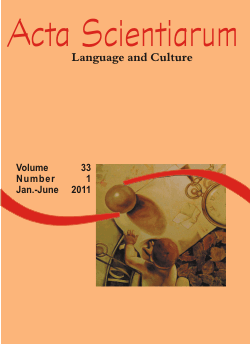<b>Rereading Hesiod: the race myth in J. M. Coetzee´s <em>Age of iron</em></b> - doi: 10.4025/actascilangcult.v33i1.6467
Abstract
This essay analyzes how South African novelist J. M. Coetzee focuses the Hesiodic myth of the four races in his novel Age of iron. First the construction of Hesiod’s text is analyzed, highlighting how races are exposed according to a presumed progressive decadence in accordance to the peculiar temporality of each one of them, and to their cyclic character. Next, the essay focuses on how the notion of a world in which disorder increasingly gives way to injustice, disgrace and death is associated with the South Africa of the apartheid era dipicted by Coetzee, and how the country is depicted as a terminally ill society. Then, the study proceeds to demonstrate how sickness, old age, death and, ignorance of the future that characterize Hesiod’s Age of Iron are reread by Coetzee in this novel context.Downloads
DECLARATION OF ORIGINALITY AND COPYRIGHTS
I Declare that current article is original and has not been submitted for publication, in part or in whole, to any other national or international journal.
The copyrights belong exclusively to the authors. Published content is licensed under Creative Commons Attribution 4.0 (CC BY 4.0) guidelines, which allows sharing (copy and distribution of the material in any medium or format) and adaptation (remix, transform, and build upon the material) for any purpose, even commercially, under the terms of attribution.
Read this link for further information on how to use CC BY 4.0 properly.




















6.png)









